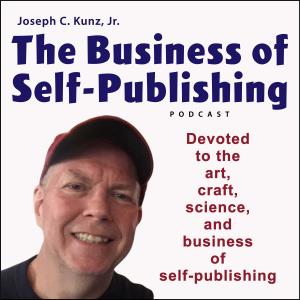The Business of Self-Publishing

5 Surefire Ways To Optimize Your Book’s Sell Sheet
Updated December 10, 2022 Synopsis To become or remain financially successful as a self-publisher, you must be able to quickly and effectively get your marketing message to your book-buying audience. Your book’s sell sheet is an excellent tool to do this. The sell sheet is a perfect marketing tool for offline AND online marketing – because it’s simple to understand and gets directly to the point. So, here is a short discussion of five specific ways to make your sell sheet a potent marketing tool. What You Will Learn 1. You will learn about the five essential elements you must incorporate into your book’s sell sheet. 2. You will learn how and why these elements are essential for your book’s success. 3. You will learn the five most important ways to optimize your sell sheet so that people want to read it. Introduction To become or remain financially successful as a self-publisher, you must be able to quickly and effectively get your marketing message to your book-buying audience. Your book’s sell sheet is an excellent tool to do this. The sell sheet is a perfect marketing tool for offline AND online marketing – because it’s simple to understand and gets directly to the point. And, as The Professor likes to say, it’s “no fuss, no muss, no waste, no bother” for you or the buyer. (He has many insightful gems like that. I hear them all the time. He has one for every imaginable situation. But he’s a wealthy business genius, so we all listen.) Here Are The 5 Essential Elements To Optimizing Your Sell Sheet: Sell Sheet Optimization Tip # 1: Keep It Simple The genius of a sell sheet is that it’s quick and easy to read. It’s supposed to convey the most important and pertinent information about your book in a short, simple, and obvious format. And it must be appealing to look at and read while doing all of that. All of the information on the sell sheet must only be concerned with your book. No extraneous information is necessary. In other words, don’t oversell or exaggerate. Get to it quickly. You only have about 30 seconds to hold onto the person reading your sell sheet. Use every inch of that sell sheet very wisely. Ask yourself: “What information is necessary to help the buyer find out more about my book or go directly to buying it?” Sell Sheet Optimization Tip # 2: Differentiate Your Book Differentiate yourself, your message, and your book from your competition. You’ve all heard about differentiation a million times before. You know this already. If you didn’t know how to differentiate yourself, your message, and your book from your competition BEFORE you wrote your book, you have much bigger problems that a sell sheet can’t fix. Your message that you want, or need, to share with your reading audience and how you write about it needs to come through on your book’s sell sheet. Look at yourself, your message, and your book from the perspective of your audience, readers, and customers. Now show them how you and your book are different, better, or more insightful for your book’s subject matter than your competition is. Sell Sheet Optimization Tip # 3: Build a Visual Hierarchy By “visual hierarchy,” I mean that the reader’s eyes should first notice the essential item on your sell sheet. This item, text, or photo will probably be the most oversized item on the page. The book’s cover, for example. Or the title of the book near the top of the sell sheet. You should get the idea here. Then their eyes should be drawn to the second most important item on your sell sheet. Maybe this is a word or statement about the book’s subject matter. The text here might be bigger or more colorful than the other text on the page. Then on to the third most crucial information you want the reader to see next. And so on. Typically, these items start at or near the top of the page, where most people first look on paper. And, when viewing on a computer screen, almost always from the top down.






 Visit Podcast Website
Visit Podcast Website RSS Podcast Feed
RSS Podcast Feed Subscribe
Subscribe
 Add to MyCast
Add to MyCast